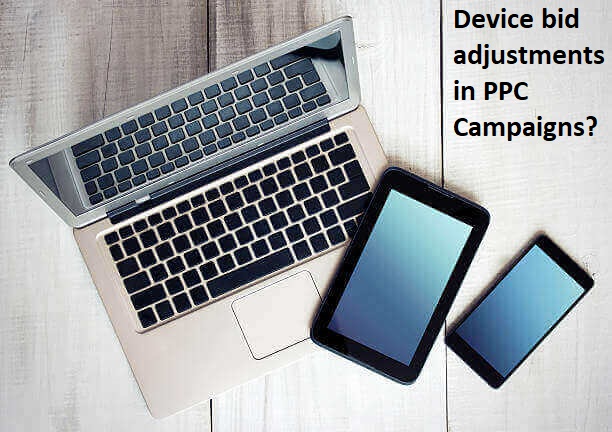Digital marketers and advertisers have faced challenges in recent years as society increasingly moves to a multi-device lifestyle. Even though people may still switch between several devices with ease, mobile devices have unquestionably overtaken other priorities for many.
Which businesses can benefit from Device bid adjustments?
Businesses that provide “Instant” solutions, like restaurants or plumbers, may benefit tremendously from having their advertisements aimed more at users on mobile devices who are searching or browsing the web on those devices. Marketing agencies are an excellent example of a company that is more likely to invest in desktop or tablet advertising because they typically see conversions that take longer. Mobile users are typically more likely to convert on kind of impulse buying situations. Therefore, it is advantageous for marketers who provide immediate responses, like restaurants, to be able to target a larger portion of their ad budget on mobile.
Therefore, these businesses need bid adjustments that can be applied to devices depending on which would bring in the most (conversions) at a lower CPA.
How can Device bid adjustments be useful in bringing more leads or sales?
Device bid adjustments are used to change keyword bids to get the most out of the profitable devices. We can modify the position of our ads based on the searcher’s device, including mobile phones, tablets, and desktops, using device bid adjustments. We have the option to reduce our bid by up to 100%, which will stop the display of ads on that device. On the other hand, we can increase the bid by as much as 900%, which will increase the device bid to ten times the original amount. We can set bid adjustments at the campaign or ad group level. If the performance variations by device are the same across all of our ad groups, it is better to make the adjustments in the campaign settings. If the performance differences are not constant across different ad groups, we can make changes at the ad group level.
If we are a bus booking service, for instance, and we discover that the majority of our bookings are made on a mobile device, we might want to raise our bids for mobile so that our ads appear at the top position of the search results page. Here, bid adjustments are beneficial and raise the frequency of our ads on the device. Device bid adjustments are set by percentages. As an example, our bid for a specific keyword is $1.If we have a +50% bid adjustment for mobile devices, our bid for that keyword when a user is on their phone is $1.50.Our bid would remain at $1 for searches on all other devices in that campaign.
Let’s see how to adjust device bids manually and with automated bidding
Adjusting Device-Specific Bids with Manual Bidding
We can utilize full-value conversions to manually calculate device-specific bids by calculating the full-value CPA (using Assisting devices report) and then figuring out the best device bid adjustment. Full-value conversions comprise both conversions obtained directly from Google Adwords and any actual sales resulting from the advertisements (offline conversions, calls, etc.).
When the full value conversion total has been determined and the total full value CPA is calculated, the device bid adjustment change can be calculated using the following formula:
Device bid adjustment ratio = (Total full value CPA/Device full value CPA)
Then, to get that number to a percentage:
Device bid adjustment change = (Device bid adjustment ratio – 1) * 100
In this example, we’ll set full-value conversions exclusively for mobile and then compute the CPA for both mobile and others. The device bid adjustment change for desktops, mobile, and tablets will then be determined.
| Device | Cost | Reported Conv. | Full Value Conv. | Full Value CPA | Bid Adjustment Change |
|---|---|---|---|---|---|
| Mobile | $100 | 7 | 9 | $8.0 | +91% |
| Desktop | S110 | 8 | 8 | $10.0 | +53% |
| Tablet | $80 | 2 | 2 | $16.50 | -8% |
| Total | $290 | 17 | 19 | $15.26 | – |
Remember that any previous bid adjustments must be taken into account when calculating the device bid adjustment using the simple formula below:
Existing bid adjustment (as a decimal) x new device bid adjustment (as a decimal) =new bid adjustment (as a decimal)
Adjusting Device Bid with Automated Bidding
In contrast to manual CPC, Target CPA bid adjustments change the value of our CPA target instead of the actual bids. When converting to Target CPA, we might want to delete our manual CPC bid adjustments for best performance.

Here is an example, we have a goal of $150 cost per conversion or Target CPA
| Device | Bid Adjustment | Clicks | Cost Per Click | Conversion rate | CPA |
|---|---|---|---|---|---|
| Tablet | 0 | 1500 | $1 | 1% | $150 |
| Mobile | 0 | 6500 | $1 | 0.80% | $160 |
| Desktop | 0 | 5000 | $1 | 0.90% | $170 |
We understand that tablet meets their target CPA but Mobile & Desktop are not meeting the target CPA. Because our Mobile cost per sale is 10% higher than the target CPA, we should set a bid adjustment of -10%. That will lower our cost per click but will reach our target CPA. Our new bid for mobile devices will be $0.9 instead of $1.Desktop is 20% higher than its target CPA and should have -20% bid adjustment applied. This will make its new bid $0.8 instead of $1.
| Device | Bid Adjustment | Clicks | Cost Per Click | Conversion rate | CPA |
|---|---|---|---|---|---|
| Tablet | 0 | 1500 | $1 | 1% | $150 |
| Mobile | -10% | 6500 | $1 | 0.80% | $160 |
| Desktop | -20% | 5000 | $1 | 0.90% | $170 |
Conclusion
Therefore, we can see that Device bid adjustments give advertisers better control of where their ads are shown. This is where our whiteDigital PPC management services come into play by helping advertisers increase their ROI by allocating their budget more efficiently.













